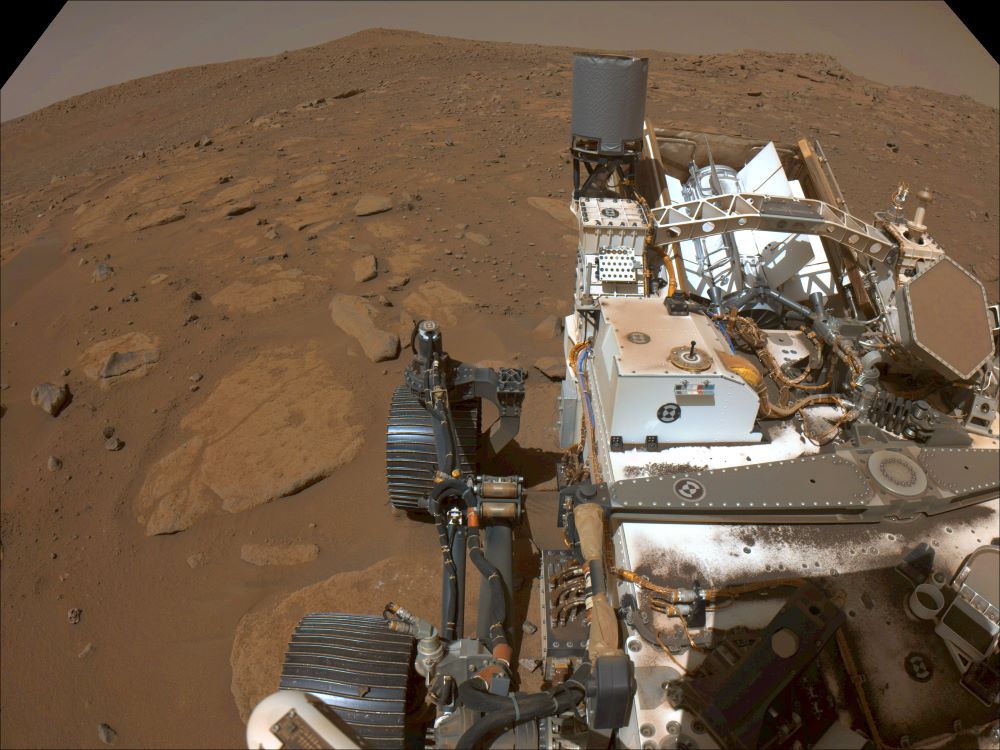If you’ve noticed a slowdown in Mars news lately, it’s because of the Sun. Or, rather, it’s because the Sun is temporarily blocking our “view” of the Red Planet, which is on the other side of the Sun from Earth, in what’s called “Mars Solar Conjunction. ” This happens every two years as Earth and Mars move through their orbits.
The last one was in 2021. Of course, the missions don’t stop doing their work. They stockpile data until it’s safe to send their data-rich signals back.
That means all the raw images and data are on “pause” until the solar conjunction ends. Mars Solar Conjunction Effects Ordinarily, the Mars missions send data back every day (depending on the craft). But, during this solar conjunction, those signals have to take a trajectory that brings the data stream close to the Sun.
Of course, the Sun being the Sun, it’s constantly sending ionized gases and particles out to space through the corona. The environment corrupts signals moving through the near-Sun environment. In particular, that affects spacecraft commands and software updates.
That happens to any data coming back from the planet. So, to keep things safe and “nominal”, the spacecraft engineers don’t send crucial commands during this time. And, the spacecraft themselves are programmed to do their normal science This year, the conjunction “blackout” runs until November 25th.
NASA receives “health updates” during this time, other than a two-day period when Mars is completely blocked by the Sun. Mission scientists began planning for the Mars Solar Conjunction earlier this year. “Our mission teams have spent months preparing to-do lists for all our Mars spacecraft,” said Roy Gladden, manager of the Mars Relay Network at NASA’s Jet Propulsion Laboratory in Southern California.
“We’ll still be able to hear from them and check their states of health over the next few weeks. ” What Are the Mars Missions Doing? During this two-week period, all the missions are still busy. Other than some simple “to do list” items, most of the major instruments onboard the missions will be inactive.
That doesn’t mean they won’t be doing science—it just won’t be the data-heavy tasks they normally undertake. NASA’s Perseverance and Curiosity rovers parked themselves for the time being. They’re monitoring changes in surface conditions and studying the weather.
Each one is also measuring radiation as they stay in their respective stopped positions. Engineers grounded the Ingenuity helicopter. However, it’s still using its color camera to study the movement of sand at the site.
The Mars Reconnaissance Orbiter and the Odyssey orbiter are imaging the surface and MAVEN is collecting data on interactions between the atmosphere and the Sun. Once the two-week data “moratorium” ends, the orbiters will start relaying data again. Engineers will resume sending software updates and commands, and it will be back to “business as usual” for Mars exploration.
Once data starts arriving, system engineers will check it for any corrupted files. If any exist, those can be retransmitted in a later data run. Finally, once the teams determine “all is well”, they’ll reactivate instruments, including all cameras.
After that, the usual run of raw images and data should commence. For More Information NASA’s Mars Fleet Will Still Conduct Science While Lying Low What is Mars Solar Conjunction and Why Does It Matter? The post It’s Time for the Mars Rovers to Hunker Down and Wait for the Earth to Return appeared first on Universe Today. .
From: universetoday
URL: https://www.universetoday.com/164357/its-time-for-the-mars-rovers-to-hunker-down-and-wait-for-the-earth-to-return/



